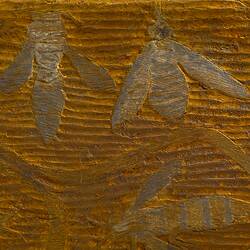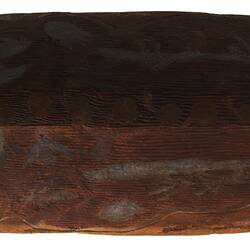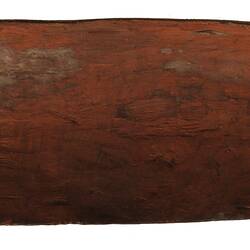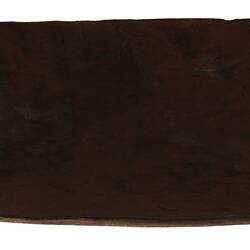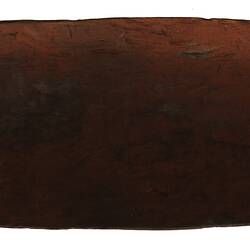Summary
Erlikilyika (Alyelkelhayeka), also known as Jim Kite Penangke (c.1865-c.1930), was a gifted carver, sculptor and illustrator who lived most of his life at the remote outpost of Charlotte Waters Telegraph Station. Kite's handiwork was very popular with visitors to the Telegraph Station and his sculptures, made from locally sourced Kaolinite clay, were celebrated by journalists, writers and collectors. Amongst his carvings and sculptures are clay smoking pipes with images of local identities, dingoes, horses, eagle claws, hands and eggs carved into bowls. Erlikilyika's carved wooden artefacts too featured scenes of Aboriginal life, insects, small mammals, and historical events, like the arrival of explorer John McDouall Stuart in Central Australia the 1860s. In 1901 Kite joined the anthropologists Francis Gillen and Walter Baldwin Spencer on their expedition from Charlotte Waters to the Gulf of Carpentaria in 1901 and in addition to be being engaged in manual tasks was also enlisted as an informant and an interpreter.
Local Name
Urtne
Physical Description
Coolamon carved from single piece of wood and imagery of insects on outer surface done in relief.
Significance
This work has been attributed to Erlikilyika Penangke by the museum's curators. It was received from the estate of the anthropologist Herbert Basedow, who had engaged Erlikilyika as an interpreter and guide in the early 1920s in central Australia. Erlikilyika was as famous as an artisan in his day as Albert Namatjira was in his lifetime, and his works sought by many collectors. This coolamon is recognised as an important example of Erlikilyika's artistic skill in creating realistic representations of insects, a popular subject amongst his significant repotoire of imagery. The stick insect here appears to be moving forward or is poised to jump.
More Information
-
Object/Medium
Container
-
Maker
-
Cultural Groups
-
Locality
Charlotte Waters, Desert Central, Northern Territory, Australia
-
Date Produced
-
Collector
-
Date Collected
-
Object Measurements
480 mm (Length), 125 mm (Width), 60 mm (Height)
-
Classification
-
Date Made
-
Maker
-
Clan/Language Group
-
Place Made
-
Keywords
-
References
[Book] Museum Victoria. 2004. Treasures of the Museum. Victoria, Australia. 206.
[Chapter] Gibson, Jason. John McDouall Stuart Remembered in Central Australia, in Inglis, Alison, et al. Scots Under the Southern Cross. 41-52.
-
Collection Names
-
Type of item
-
Discipline
-
Category
-
Collecting Areas

